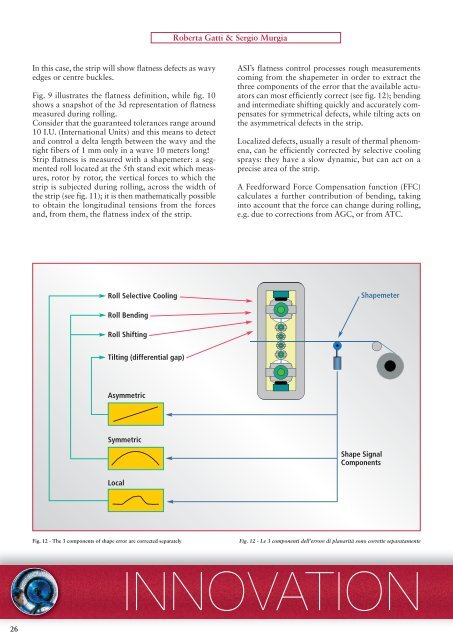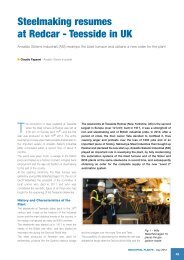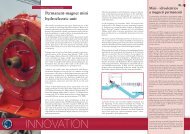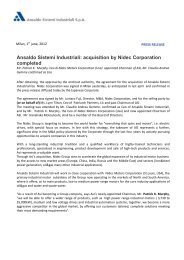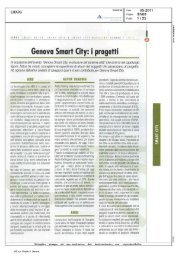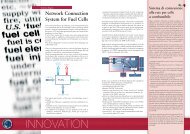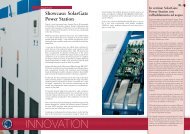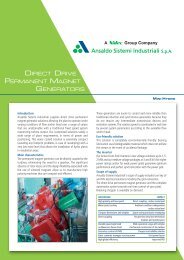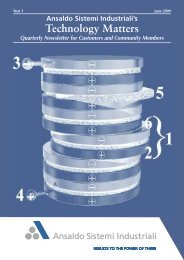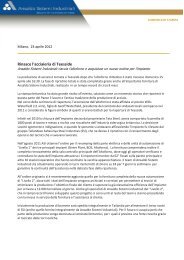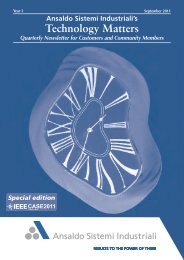Our automation system for a continuous tandem mill coupled with ...
Our automation system for a continuous tandem mill coupled with ...
Our automation system for a continuous tandem mill coupled with ...
You also want an ePaper? Increase the reach of your titles
YUMPU automatically turns print PDFs into web optimized ePapers that Google loves.
26<br />
In this case, the strip will show flatness defects as wavy<br />
edges or centre buckles.<br />
Fig. 9 illustrates the flatness definition, while fig. 10<br />
shows a snapshot of the 3d representation of flatness<br />
measured during rolling.<br />
Consider that the guaranteed tolerances range around<br />
10 I.U. (International Units) and this means to detect<br />
and control a delta length between the wavy and the<br />
tight fibers of 1 mm only in a wave 10 meters long!<br />
Strip flatness is measured <strong>with</strong> a shapemeter: a segmented<br />
roll located at the 5th stand exit which measures,<br />
rotor by rotor, the vertical <strong>for</strong>ces to which the<br />
strip is subjected during rolling, across the width of<br />
the strip (see fig. 11); it is then mathematically possible<br />
to obtain the longitudinal tensions from the <strong>for</strong>ces<br />
and, from them, the flatness index of the strip.<br />
Roberta Gatti & Sergio Murgia<br />
Roll Selective Cooling Shapemeter<br />
Roll Bending<br />
Roll Shifting<br />
Tilting (differential gap)<br />
Asymmetric<br />
Symmetric<br />
Local<br />
ASI’s flatness control processes rough measurements<br />
coming from the shapemeter in order to extract the<br />
three components of the error that the available actuators<br />
can most efficiently correct (see fig. 12); bending<br />
and intermediate shifting quickly and accurately compensates<br />
<strong>for</strong> symmetrical defects, while tilting acts on<br />
the asymmetrical defects in the strip.<br />
Localized defects, usually a result of thermal phenomena,<br />
can be efficiently corrected by selective cooling<br />
sprays: they have a slow dynamic, but can act on a<br />
precise area of the strip.<br />
A Feed<strong>for</strong>ward Force Compensation function (FFC)<br />
calculates a further contribution of bending, taking<br />
into account that the <strong>for</strong>ce can change during rolling,<br />
e.g. due to corrections from AGC, or from ATC.<br />
Shape Signal<br />
Components<br />
Fig. 12 - The 3 components of shape error are corrected separately Fig. 12 - Le 3 componenti dell’errore di planarità sono corrette separatamente<br />
INNOVATION


